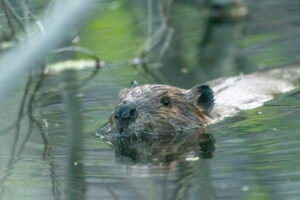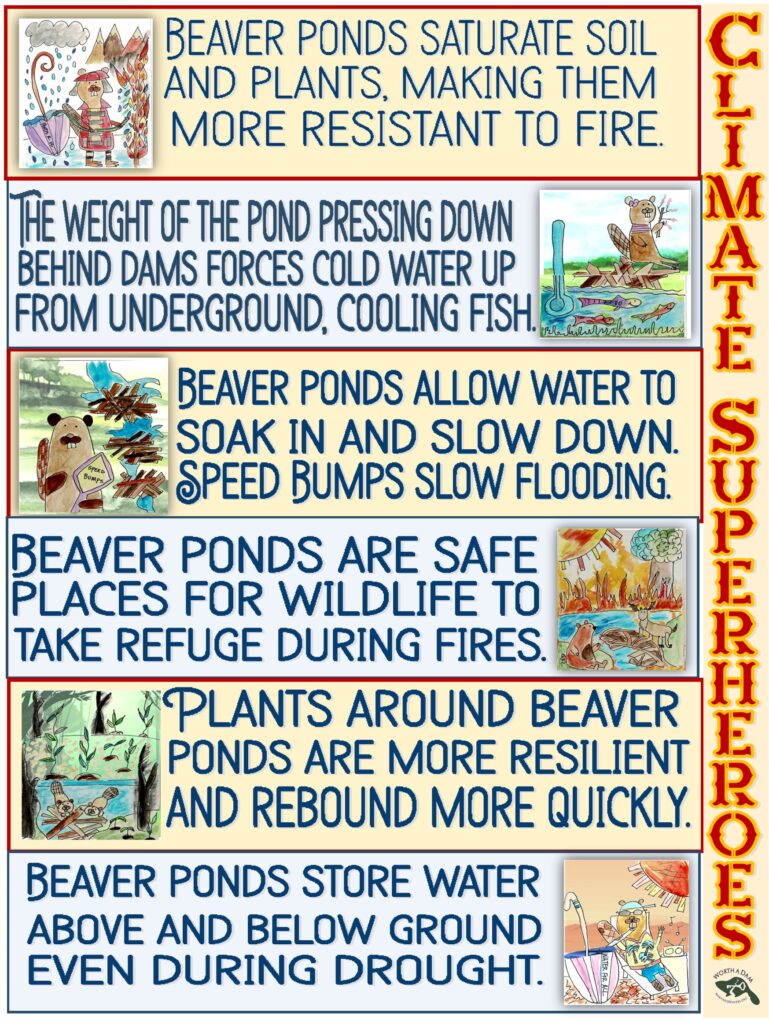Beavers have put up with a lot over the years: near extermination, being called all kind of names, lies that they kill salmon or eat salmon or compete with salmon. They’ve been dropped out of airplanes and helicopters even when people thought they mattered. Meanwhile otters have sprung back from the fur trade being called cute and athletic, Even fishermen stop what they’re doing to watch otters frolic, Even when they hate them. It’s not fair in any way, considering who does all the work that makes all those fish ponds that the otters enjoy in the first place,
So you have to forgive beavers (and me) for enjoying the thinnest slice of Schadenfreude in the past 24 hours where headlines like these have been falling like thick snowflakes.
Otter kills young beavers released at Loch Lomond
An otter is suspected to have killed two beaver kits released at Loch Lomond last month. The kits, along with their parents and three siblings, were relocated from Tayside to a nature reserve as part of efforts to boost biodiversity.
The dead beavers and an otter were spotted on remote camera footage last week.Conservationists said a post-mortem examination had confirmed an otter had preyed on one of the kits.
Well of course the post mortem could show kits in their stomachs but they couldn’t actually prove the otter killed them. I mean anything might have happened and the otter just swam up to investigate and gotten lucky. and nibbled the spoils. I mean be honest, it’s not OTTER CSI we don’t know for sure what took place. But it’s a reasonable assumption. They do attack pelicans and baby ducks, I’ve been seeing headlines like “Otters attack” and “Killer otters” for days now and all I am sure that every fish in the world is reading those headlines thinking, “MMM….And how cute are they now?”
The world is temporarily out of balance. Don’t fret, it will right itself soon enough. Let’s just turn the page and see what challenges beavers are facing now, shall we?
 Refuge Notebook: More research needed to determine beavers’ impact on landscape
Refuge Notebook: More research needed to determine beavers’ impact on landscape
 I was recently pouring through decades of beaver harvest data, trying to map where people had harvested beaver on the refuge and where they had not. This historical data is one piece of a complex puzzle in predicting current and future distribution on the landscape.
I was recently pouring through decades of beaver harvest data, trying to map where people had harvested beaver on the refuge and where they had not. This historical data is one piece of a complex puzzle in predicting current and future distribution on the landscape.
As a biologist, I feel that one of our strongest traits is pattern recognition, which was in full force as I input years of harvest data. With every name, I could visualize times I had been to almost every spot.
Even when the harvest report had the wrong name or spelling, I remembered doing a bird or vegetation survey nearby. The patterns continued year after year until I came to a name I had never noticed, Ootka Lake.
What a cool name, and why do I not know where it is? I started old school and scanned my paper maps to no avail. Next, I used my trusty electronic device and found Ootka Lake in the Beaver Creek Drainage near Akula Lake.
I had to know more about it.
As I looked at the map and traced the water back through the drainage, I also realized there was very little geological or topographical reason for a lake in the middle of these vast wetland-stream complexes.
There may or may not be beavers there now, but it seems apparent as I backtracked up “Beaver” Creek that these lakes were at one time formed by some of nature’s most energetic engineers.
There was no geological explanation for a lake there. Some other culprit must be to blame. Beavers are afoot! Call in Mr. Holmes at once, maybe he can get to the bottom of this.
At some point, I will have to find my way to the downstream side of Q’alts’ih Bena and see if there is an active beaver dam. Or is the history of that well-constructed dam buried under the lakeshore sediments and leaf detritus?
The picture in my mind of beavers dragging birch limbs down to the water’s edge may not be present, but somewhere buried in that lakeshore is a history of how a small creek was temporarily blocked, filling the valley with water, and then continued to flow down to the Kenai River and how that slow meandering creek and wetland were transformed into a small lake that continues as a place today.
What a treat to know the Dena’ina had already discovered the history of this place and named it long before the timeline of the beaver harvest records in front of me.
As our climate continues to change, concerns have surfaced about warming waterways and potential impacts on salmon. Some of my colleagues have been looking at where water in nonglacial streams similar to Beaver Creek originates and what influences the water temperature throughout the season.
Because I just THOUGHT it so it must be true. Beavers must warm ponds and kill salmon. Never mind all that research saying that dams actually cause hyporheic exchange that ends up COOLING the waters. Because science is hard to read and makes my head hurt.
Since there are no glaciers affecting water quantity and temperature in this system, we can narrow inputs down to snow melt, rain, artesian upwelling and wetlands. The lakes hold water and slowly release stored water like a sponge.
In some situations, temporary flooding from a well-placed beaver dam could be the catalyst that wets the surrounding spongy wetland. It is actually feasible that throughout a warm, dry climatic period, inputs like artesian upwelling and slow-released water from wetlands might be the temperature-stabilizing influence these creeks need to remain viable for salmon and other habitat components they need.
When I see things like fire, insect outbreaks and drought can change landscapes, I am stumped at why I never put beavers in the same category. Without more study, we can only speculate, but the influences of one family of beaver could be far-reaching. The obvious storage of water in a lake is the low-hanging fruit in this story.
Time and future research will hopefully shed light on the function of beavers on our landscape previously, today and into the future. But, for now, my daydream of visiting Q’alts’ih Bena must be put on hold as there are 10 more years of data to input and five other outstanding reports to be finished before the summer field season arrives.
Yeah it might turn out that beavers are actually helping things by making these spongy wetlands but we don;’t know for sure. It could be a fluke, They could be a cancer, spreading across the tundra and wreaking havoc. Better spend more money on research just to be sure.







































